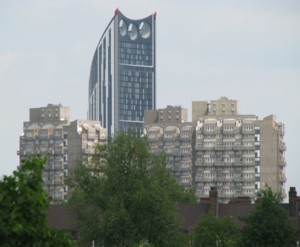We are developing the social individualist meta-context for the future. From the very serious to the extremely frivolous... lets see what is on the mind of the Samizdata people.
Samizdata, derived from Samizdat /n. - a system of clandestine publication of banned literature in the USSR [Russ.,= self-publishing house]
|
Knowing my fondness for pictures of London’s Big Things, taken from irregular places, South African blogger 6k (a scroll down there is recommended) has just emailed me with a link to this Daily Telegraph picture, which is a view from near the top of London’s BT Tower, of such things as the Gherkin, the more distant Docklands Towers, and the now nearly completed Shard. Yes indeed, well worth a click and a look. I know I’ve said it many times before, but I love how, with this new internet thing they’ve installed recently, people six thousand miles away can email you to tell you about interesting things in your own back yard.
But the real story here is not the view from the BT Tower. It is what the view of the BT Tower is going to look like from now on, and why:
BT Tower press officer Ian Reed said: “The huge dishes are synonymous with the tower and it truly is the end of an era. With the introduction of fibreoptic cable, the satellites have been defunct for many years and have reached the end of their lifetime. People will remember the dishes from when they were children – they were responsible for 90 per cent of the TV shown in the country. They were a landmark and could be seen all over London.”
I had no idea this was going to happen. [LATER: And either the DT or Ian Reed has it wrong also. As commenter Roue de Jour explains: “They’re not satellite dishes they’re microwave dishes. They point to similar dishes on masts on a line-of-sight. Satellites are not involved in any way.”]
Here are a couple of before and after shots of the Tower, how it looked and how it now looks. And here are two shots I took of this tower, with its big dishes, in February 2006.
I wonder what will happen next? Will they just fill in the gaps with dreary windows and office space? Or will new and different high tech contraptions be installed? I fear and expect the former, but hope for the latter.
LATER: See also another amazing London tower picture, the very first one of these. Those are the Docklands towers.
At some point last weekend, on a whim, I did some ego-googling, and discovered that maybe I should do this more often. Because, what I got to was a video of me giving a talk, last February, about modern architecture to the Libertarian Alliance, early this year. I of course knew that it was being videoed at the time, but had assumed that they didn’t reckon it good enough to see the light of YouTube. But I was mistaken.
I managed to watch the thing all through without too much pain, but there is one glaring contradiction built into it, which is that my account of the emergence of the nineteenth century American skyscraper contradicts what I later said about form in modern architecture never following function. If by “form” is meant how a building looks, then it is indeed the case, as I said, that “form” in modern architecture follows fashion rather than function. And as a general rule, as I go on to say, a building can pretty much be changed from one use to another, depending not on what shape it is but depending on what people want to do in it. Most buildings have floors, walls, roofs, and provided you aren’t trying to accommodate a Boeing 747 or a rugby match or some such thing, then for most purposes any old building, plus a bit of indoor rearrangement, will do.
But there is (at least) one huge exception to this generalisation about the tendency of form not to follow function. The function of a skyscraper (the skyscraper and its emergence in late nineteenth century America being central to the entire story of modern architecture) is to fit a lot of people into a small urban area, and the characteristic form of a skyscraper accomplishes precisely that. It is that shape because it has to be. Form follows function. So, bad me.
But then again, part of the reason you give talks is for you yourself to listen to what you said (which is far easier if someone records it for you) and then for you to decide what you think about it.
Chairman David McDonaugh’s introduction of me was more an ambush than an introduction, and I floundered about in his trap for a while (be patient please). The title was one thing when I started talking, but they ended up calling it something rather different, and for good reasons. The talk is rather episodic, the episodes towards the end being in a somewhat random order. My attempts to wave drawings in front of the camera were not always as informative as I would have liked. Plus, I refer to my friend Patrick Crozier without making it clear video viewers that he was present, in the front row. (Patrick and I did a recorded conversation about architecture in 2007, which covered similar ground to this talk, and which I listened to again by way of preparation for this talk.)
So, a bit of a muddle. But nevertheless, overall, I am still sufficiently pleased with this performance to want to flag it up here, if only to provoke others who could do better on this topic to go ahead and do so. My belated thanks to the LA both for making the video, and for making it available.
Here is a good collection of some of the strangest looking bits of architecture in the world. Some buildings will be familiar – like the Guggenheim in Bilbao, Spain – others, less so. Click on the link and scroll down. It’s a large collection.
In this, which is about some guys from Loughborough who have decided to mark cities (scroll down a bit) like they are undergraduate essays (Alpha+, Beta+, Beta-, etc.), NickM waxes lyrical about Prague:
The coolest city is Prague. Prague is just mental. I’d happily move there tomorrow but for the language which is something else. Just super-cool. On the Charles Bridge there was a rodent balancer. Some bloke in a monk’s cowl was balancing rodents on a labrador for change. And then you just walk past where Kepler lived and customer service is spot-on and it was about a quid a pint for most excellent beer right in the city centre and the food was good quality and good value. Went to a steak house run by former firemen who donned the hats when they put the heat to the meat. Bloody good steak that was. And then down by the river and a load of blokes ride past me in Edwardian garb astride penny-farthings. Prague is just ineffably cool. Just wandering around is wonderful. Just doing that brought me by chance to the church where the killers of Reinhardt Heydrich had holed-up. That was poignant. And then there is the Museum of Communism. This is not a free museum. It makes a point of being a for profit enterprise. It advertised, when I was there, with a Russian doll with fangs. It gives it’s address as, “Above McDonalds and opposite Benetton.”. It didn’t need to add, “And fuck off Lenin”. A joy to behold.
Here endeth the broadcast from the Czech tourism bureau.
But he adds a warning:
But catch it while you can and before EU membership fucks it.
Well, EU membership doesn’t seem to have fucked London yet, despite decades of the EU trying everything they can think of to accomplish that. London, according to the Loughborough guys, is equal top (Apha++) with New York. NickM goes further. He reckons New York is overrated and has London top on its own, as the greatest city in the world “bar none”. He doesn’t say why, however.
Personally, I love London, because I live here and I just do. But I do not know where I think it ranks in the great city stakes because I seldom leave it, and hence can’t compare it with other urban greatness contenders.
I have been to Prague, which I thought was pretty good. The middle is amazing, wall-to-wall listed buildings, as we would say in London. As I assume is the case in Prague too, i.e. you may not smash it down and replace it with a concrete blockhouse, just because you “own” it. Which I understand. But the uninterruptedly historic nature of the centre means that nothing new can now be built. In other words, the centre of Prague feels like a film set, and will feel more and more like one as time passes. See also: Paris.
Instapundit (and yes I am reading him a lot just now) has been linking to a book called Gray Lady Down, which is about the downfall of the New York Times, from a persuasive proclaimer of the statist consensus to an unpersuasive proclaimer of the statist ex-consensus. I’ve not read this book, but it has a big picture of a skyscraper on its front cover. Might there, I wondered, be a brand new, custom-built headquarters involved in this story? There might indeed:
The New York Times Building is a skyscraper on the west side of Midtown Manhattan that was completed in 2007. …
Previous example of something very similar here. Since writing that earlier posting, I have dug out the original description of this syndrome, by Professor C. Northcote Parkinson, and I note that he sees the causation involved as a bit more complicated than I had previously stated. It is not just that building a new headquarters building causes an enterprise to take its eye off the ball. Its eye already was off the ball, or it would never have decided to build its new headquarters in the first place.
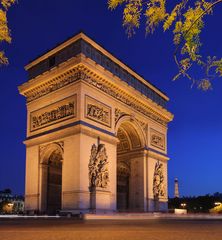 Paris Paris, France.
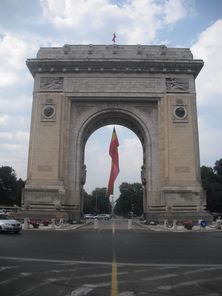
Bucharest, Romania. July 2010.
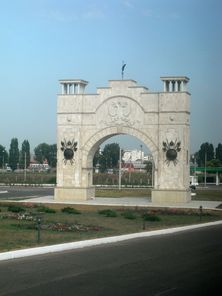
Bender, Transnistria. August 2010
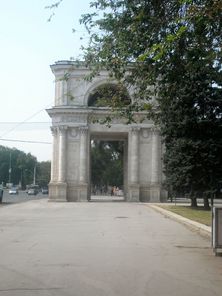
Chisinau, Modova. August 2010

Vientiane, Laos. October 2010
I think that in the light of the recent controversy about the place possibly known as the Cordoba Center near Ground Zero, the real cause for annoyance on the part of any New Yorker, surely, is why it has taken so long to get going with any serious construction down there. This Wikipedia entry on the Empire State Building, for example, suggests that the building in Midtown was erected in a space of only a few years. That was in the early 1930s – what was so radically different then?
I suspect that if we already had an impressive and dignified piece of architecture in the southern tip of Manhattan, the row about what happens to nearby buildings would not have erupted so much. It seems that planning and political issues are at stake here – after all, places such as Dubai and various parts of Asia put up skyscrapers with great speed these days.
Or maybe the intention all along is that Ground Zero should remain a flat, empty space of land, purely in the form of a place for remembrance.
Opinions about new architecture differ a lot, but from where I sit, in London, and when I walk about in London taking photographs, I think that new architecture, having gone through an all-time-worst phase (apart from the BT Tower) between about 1960 and about 1980, has of late been doing rather better. This chap seems to agree, although it’s all in Russian and I could be quite wrong about that.
The latest London Big Thing to be completed is this:
It’s called the Strata, and that’s a view of it from Vauxhall railway station, just across the river from where I live, towering above a concrete stackapleb cluster between it and me with my camera. → Continue reading: Strata
One of the interesting exhibits in the pantheon of attempted explanations for the current financial crisis is the Kingdom of Spain. Spain had a massive real estate driven asset bubble, which has since collapsed. There is high unemployment, horrible public sector budget deficits, and lots of abandoned, half built housing projects around the coast. (In January, I struck up a conversation with some Australian engineers at the next table in a restaurant at lunchtime in the business district of Hanoi. Upon asking them how business was, they told me that there are lots of construction projects going on, but they were being undercut on price by Spanish and Italian companies. When domestic demand collapses, you look elsewhere).
And yet, Spain has not had a financial crisis. Spain’s banks are generally solvent and in good shape. One explanation of this is that financial crises in other economies are more a symptom of the economic crisis rather than its cause. Asset bubbles end badly. Government overspending has consequences.
One of Spain’s banks, Grupo Santander, has been expanding steadily throughout the world for a little over a decade. Unlike certain other banks of an expansionary nature (Royal Bank of Scotland, cough), Santander did not combine the acquisition of foreign banks with stupid lending, and so when the global banking sector fell in a heap a couple of years ago, Santander did what sound companies often do, and went looking for cheap assets. These included the small UK bank Alliance and Leicester, and the branch network and savings business of Bradford and Bingley (after its toxic assets had been nationalised by the UK government). Santander was an attractive buyer from the perspective of the UK government, as its expansionary frame of mind meant that it was unlikely to close branches and shed lots of employees.
My general inclination here is to compliment the management on running a good business. However, there is something disturbing, just the same. I have felt this for a while. Spanish financial institutions (and in truth Spanish organisations of all kinds) have a thing for building office complexes in the suburbs of Madrid that look like something out of a James Bond movie. It would be mean to say something about lingering residues of fascism here, so I will not do this.
However, the new headquarters (er, sorry, I mean the Ciudad Grupo Santander) shown in the above video really does appear to be a doosey. Professor Parkinson would no doubt have something to say here, but I feel oddly positive. However much I sometimes think that people who make corporate videos of this kind are best when placed on the B-Ark, being driven around by bright red Spanish banko-robots is certainly going to make marketing visits to foreign financial institutions a lot more fun. (Do they bring in Lewis Hamilton to race them on AGM day? Jokes about “augmented reality” in banking could go on and on, too).
It’s a shame that they have to build this sort of thing in Madrid, though. Building it (perhaps on an artificial island?) next to the private zoo in King Alfonso XIII’s weird coastal folly in the actual Ciudad (non-Grupo) Santander would be fitting, in some unexplainable way.
Link via Bruce Sterling.
At my personal blog, I like to write about skyscrapers. Basically, my attitude is: skyscrapers are good.
A particularly choice one is being erected in London just now, the so-called Shard, despite fears all round that the economic meltdown would demand that it be aborted. And of course I have recently also been taking note of that huge tower they’ve just opened in Dubai. I recently did a posting saying that maybe Dubai is not such a daft place as many are now saying. Maybe all those towers actually make some sense, basing my very tentative optimism on a photograph which included not just the towers but their surroundings.
But Michael Jennings, who has actually been to Dubai (on account of him having been everywhere), recently emailed me to suggest that the Dubai-is-daft tendency is probably right:
Dubai is just about the oddest place I have ever been to. I failed to go up the tallest building in the world because something went wrong and they closed it (a story in itself I would guess). The structure of the whole place is completely wrong though. It is as if someone has taken the most impressive looking bits of all the cities of the world – built new versions two or three times the size in the desert, and then attempted to weld them together into a city, but without any idea whether such things can or should fit together, and if they can, how to make it work. Virtually all the low level structure of a city is missing, and the overall question is simply who is supposed to be doing business in this place? I don’t get it at all. However, given the many tens or hundreds of very large structures half built in Dubai (the number of which rather boggles the mind) a few Arab bankers exposure to one little shard in London must be the least of their worries.
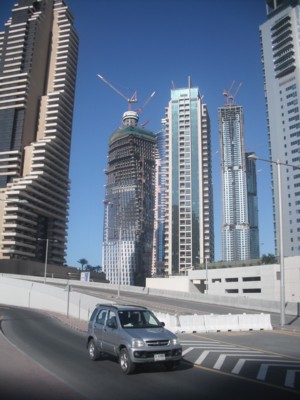 More of my speculations on the links between our “little shard” and the towers of Dubai here. But, as that posting says at the end, Michael was wrong about them building the Shard. He said they’d scrap it. Actually he went further than that and said that if they built it, he’d eat his laptop. So maybe he’s also wrong about Dubai being daft. I’m sure some of our commentariat, like Michael and unlike me, have been there. What did they make of the place?
Michael tells me that he intends to write again at greater length about Dubai, and also that he is not wrong about it.
In my browsing through the Web I enjoy the site of David Thompson. After getting a pointer from Brian Micklethwait on his own site, I started to check in on Mr Thompson’s site pretty regularly. On Fridays, he manages to get his hands on all sorts of weird and wonderful stuff, often with fabulous photographs.
Well, if you have thought of living in a tree house (as I did as a young boy on my parents’ farm in Suffolk), then check out this.
I am always struck, whenever I take the Eurostar train to Paris, as I did this morning, at how much graffiti there is on the walls near the railway tracks and on the sides of the often ugly buildings that sit next to the tracks near Gare du Nord. Some of the graffiti is in fact rather well done, even rather amusing. Here is a collection of the sort of stuff you can come across in the French capital.
Of course, graffiti is an assault on property – the assault is part of the thrill for those who do it – so beyond issues of whether the daubs are ugly or not, it is something that a liberal respectful of property and boundaries will be interested in. Even if I see a clever piece of graffiti, it makes me angry that someone’s property, on which attention might have been lavished, has been defaced. In the case of privately owned property, the offence is clear and obvious: spraying graffiti on the side of your house, say, is the same, in terms of the assault on what is yours, as spraying paint on your face. With public buildings paid for by taxpayers, my view is that taxpayers are entitled to expect that, assuming they have to be forced to pay for buildings at all, that the buildings are respected and kept in good condition, and not disfigured. I suppose some folk of an anarchist type might feel that defacing public buildings is a way of protesting against such things, although I have never seen a piece of graffiti with any slogans on it that might have appealed to an individualist anarchist like Lysander Spooner or Benjamin Tucker, say. If I see an item of graffiti saying that “taxation is theft” or that “the state is not your friend”, I’ll be sure to try and photograph it.
On a related point, I have to say that the Eurostar terminal at King’s Cross St Pancras in London knocks the spots off its Paris counterpart. What a magnificent building. For once, old London town has its French rival beat when it comes to sheer architectural magnificence.
|
Who Are We? The Samizdata people are a bunch of sinister and heavily armed globalist illuminati who seek to infect the entire world with the values of personal liberty and several property. Amongst our many crimes is a sense of humour and the intermittent use of British spelling.
We are also a varied group made up of social individualists, classical liberals, whigs, libertarians, extropians, futurists, ‘Porcupines’, Karl Popper fetishists, recovering neo-conservatives, crazed Ayn Rand worshipers, over-caffeinated Virginia Postrel devotees, witty Frédéric Bastiat wannabes, cypherpunks, minarchists, kritarchists and wild-eyed anarcho-capitalists from Britain, North America, Australia and Europe.
|





